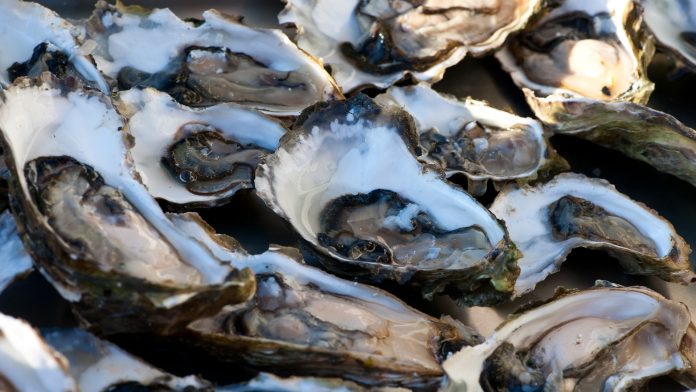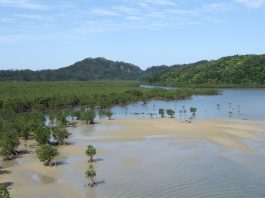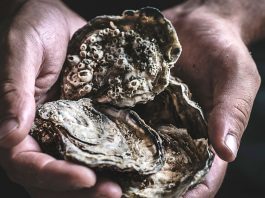Early exposure to conditions like warmer waters and low oxygen could impact oysters’ ability to grow meaty tissue on their shells.
The discovery by a team of biologists at the Smithsonian Environmental Research Center (SERC), was published in the journal Ecological Applications.
At Chesapeake Bay, oysters live mainly in shallow tributaries, where oxygen levels can vary dramatically in the hottest months, , from healthy levels in the day to near zero at night. In response to these conditions, growing oysters may concentrate their energies on shell growth, as opposed to tissue (meat) growth.
This could present a problem to the seafood industry, explained Sarah Donelan, SERC postdoctoral fellow and lead author of the new report. “Customers and restaurants might be less pleased if there’s less tissue in what looks to be a large oyster,” she said.
Donelan, an evolutionary biologist, worked alongside SERC senior scientists Matt Ogburn and Denise Breitburg, who specialises in how fish and shellfish cope with the many environmental dangers that can coexist in the Chesapeake, on the research.
It revealed that total oyster growth (tissue and shell) was most impacted when oysters experienced low oxygen alone but early exposure to such conditions affected the oysters in ways that were easier to miss, as the researchers found a significant drop in how fast oysters grow their tissue versus their shell.
When exposed to low oxygen and warmer waters both early and later in life, oysters focused their energy on growing their shells and less on the meaty tissue inside. “Low oxygen and warming waters are a real double whammy for marine organisms,” said Breitburg. “Warmer water holds less oxygen and causes oxygen to decline faster. At the same time, cold-blooded animals like oysters and finfish require more oxygen at warmer temperatures.”
Donelan studied whether being exposed to threats at a young age would impact oysters later in life. She ran her experiment in a small, dark lab, cramped and filled with aquaria to mimic the conditions of the shallow Chesapeake waters. She studied 3,600 oysters, at around three months old, then exposed them to four possible scenarios: hotter water temperatures, nightly swings of low oxygen, both conditions, and neither.
At first, no noticeable differences were observed, and all the oysters grew to around the same shell and tissue sizes. However, after a two-month break, Donelan put half the oysters back into experimental tanks and found that the oysters that had been exposed to the hot water and low oxygen scenario in the first phase of the experiment, started showing signs of strain.
The results showed that oysters that suffered both stressors twice grew their shells more than their tissue and their tissue-versus-shell growth ratio was just half that of oysters that escaped the early double exposure.
“I think that there is likely a physiological change that’s irreversible,” Donelan said, suggesting that a critical gene could have been turned off or on, or that something in the oyster’s microbiome could have shifted making them less efficient at processing oxygen.
This poses an issue, because meaty tissue is more important than larger shells to both oysters – which need it to survive and spawn more oysters – and oyster farmers.
In order to protect their stock, oyster farmers could track the oxygen levels in the water and bubble extra oxygen into areas as needed.
Protecting oysters while they are still young, is key, said Donelan, as those that weren’t exposed to the combination of low oxygen and warm waters in early life, fared much better when faced with the same conditions later in life.









